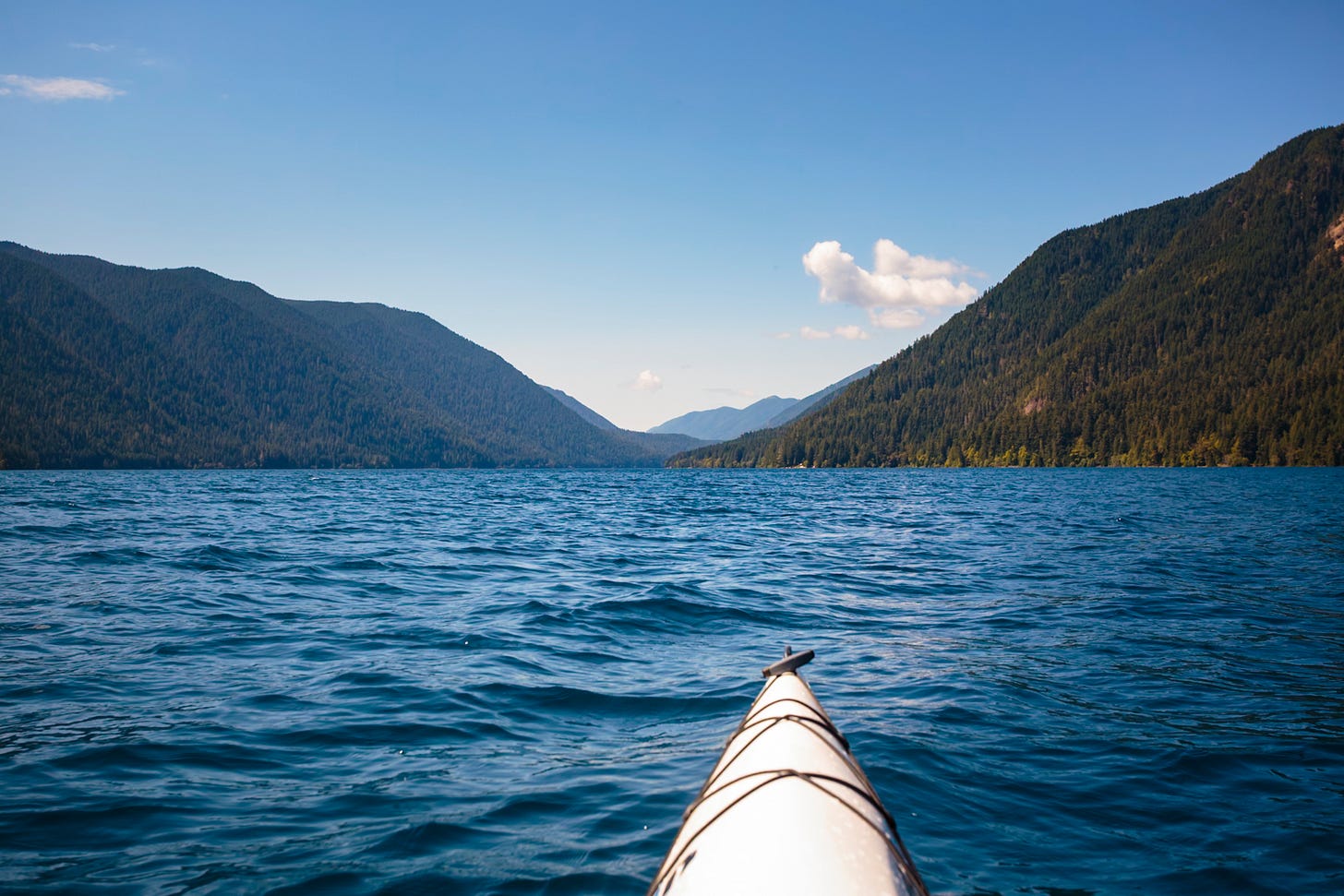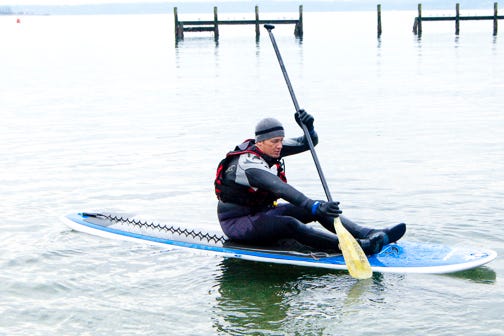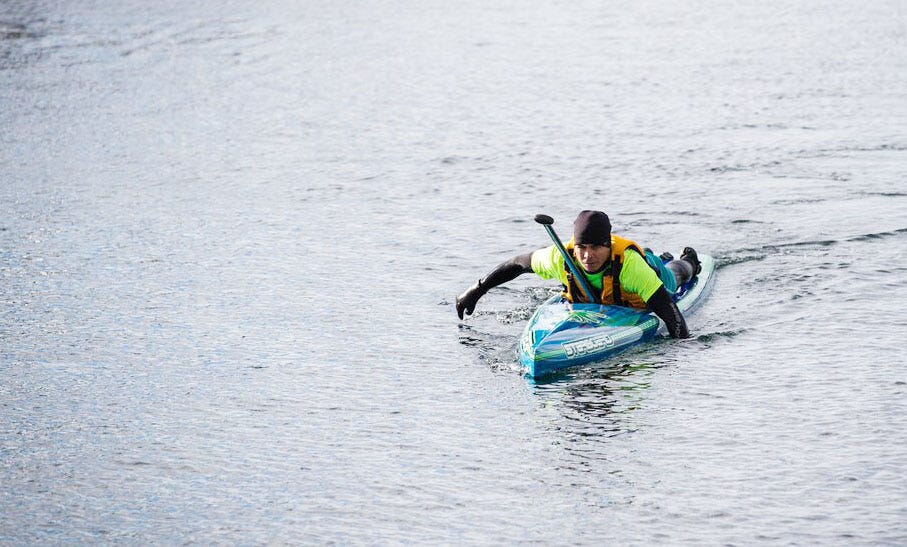Navigating the Breeze: How to Paddle Upwind Easier
Paddling upwind can be challenging, but with the right technique, you can make it easier and more efficient. Here are some tips to help you paddle against the wind
Ever find yourself in windy conditions above your skill level and needing to get back to your car?
Or you’re playing around in wind and find it difficult to paddle up wind?
Many of us love paddling in wind. Downwinding is a fun option for paddling with the wind at your back while connecting waves together for continuous rides. But sometimes the wind shifts and you need to paddle back, best to know how to.
7 Tips in Preparing for Paddling in Wind
- Learn how to read or use marine forecasts and know basics weather terms. There’s several very good weather apps and NOAA or other regional government weather sites which can be useful with staying within your skill level.
- Find out how to dress for conditions which are or may be windy. Wind can drop air temps and/or create splashy conditions.
- If you’re on a paddle board or surf ski, use a leash to stay connected in case of capsize.
- Learn how to look at maps and charts to determine where it’ll be less windy or where exposed areas may be. For example, it may be less windy on the opposite side of a hill or cliff than on the other side. I’ll cover more of this soon.
- Carry basic safety gear such as a tethered and waterproofed phone or VHF radio. I carry one or both in my life jacket.
- Set up a Float Plan, which means leaving your trip info with a buddy on shore - trip plans, when you plan to be back and description of your gear. Check in once back.
- Learn how to comfortably paddle in bumps or small waves or chop. If you have solid paddling skills, you can paddle safely to more places. Look at taking classes and paddling with others more experienced than you.
Up Wind Paddling Techniques
For Stand Up Paddle Boarders:
Many like to kneel when paddling up wind. But you’re still tall enough to be a sail going up wind on your knees. Sitting creates less drag. Choke up on your paddle so your lower hand is just above the blade. Place your legs in front of you at a slight angle with knees up (place a fist below your knees). Or cross legged. Lean forward for your stroke and feather your blade (flat on the recovery to reduce windage). Keep your lower arm slightly straight for your stroke. Short quick strokes! Long strokes will burn you out.
If you have to be on your knees, lean forward for your strokes as you do standing up. Many knee paddlers are straight up when paddling, thus creating more wind drag and a less powerful stroke. Short strokes, lower straight arm for more power and feather on your recovery.
In small conditions, prone paddling is very efficient as long as your board isn’t too wide for paddling with your hands. Swing your legs behind for more power.
When paddling directly up wind and are standing, bend your knees as waves rise below you. Stay relaxed with a loose grip with your hands.
As mentioned above, always use a leash in wind and waves to stay connected to your board. Wind can sweep boards away quickly.
For Kayakers / Outriggers / Surf Skiers:
Use short quick strokes in paddling up wind, pulling the blade out at your knees. For boats 18’ or less, lean back on waves above your head, keep paddling over the top and the other side.
Prone Paddle Boarders:
Prone paddle boarding is one of the most efficient upwind paddling options. These are narrow fast boards that are a cross between a surfboard and a stand up paddle board. You lay chest down or on your knees and paddle with your hands. Proners are often leashed but don’t use lifejackets.
All Paddlers:
For beginners, paddle up wind first. When you’re more fatigued, take the wind at your back to your car.
When in doubt, don’t go out. Follow your instincts, if it looks sketchy or above your level, you’ll stay off the news on shore.
Set up a car shuttle to have a backup if you get blown down or enjoy the free glide!
Practice paddling in light wind to about 5-15 knots with wind at your side (beam winds), at an angle (quartering wind), behind you (following seas) and directly into it (head seas). Use apps like WindAlert or Windy or a wind meter to determine wind speed. Over time you can look and determine without an app what’s going on in real time.
Use docks, boats and other obstructions which could block wind to move forward. It’s less work to do this than go straight up wind.
Tacking in a 45 degree angles up wind helps reduce your body paddling straight into the wind and allows for paddling at an angle over steep waves. Hitting waves straight on can slow you down and be exhausting.
Get my book Paddling the Salish Sea to learn more about planning trips, forecasting marine weather and much more.
Have fun!
Related Posts:
Using Tidal Currents to your Advantage
Nighttime Paddling: Essential Tips for After-Dark Adventures
I Provide Custom Surf Ski and SUP Coaching
Through my business Salmon Bay Paddle I offer 1-1 and 2 person personalized paddling lessons for sups and surf skis in the Seattle area and beyond for all skill levels.
Whether starting as a total beginner or as an advanced paddler seeking to refine your skills I can help you reach your goals.
I provide training for touring, learning about tides and currents and trip planning, paddling safely in Deception Pass, surfing freighter waves in Seattle and more.
Contact me to chat. / Follow me on IG: @salmonbaypaddle







